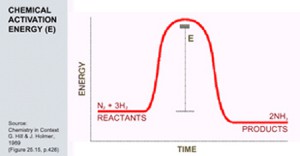By Owen Gadeken
Teaming is so common in today’s project management environment that most of us assume it comes naturally. We further assume that when presented with meaningful and challenging work, project teams will naturally engage in productive activity to complete their tasks. This assumption is expressed in the simple (but false) equation: Team + Work = Teamwork.
Although this equation appears simple and straightforward, it is far from true for most project organizations whose reality is a complex web of institutional norms based on individual achievement and rewards. This is illustrated by the very first successful team experience from my early Air Force career. As a young lieutenant, I was sent to Squadron Officer School, which was the first in the series of Air Force professional military education courses I was required to complete during my career. We were immediately formed into teams of twelve officers. Much of the course featured competition between these teams.
As the most junior member of my team, I quickly observed the tremendous pressure to show individual leadership capability. At one point early in the course, almost everyone in our group was vying to become the team leader. This conflict was so intense that it caused us to fail miserably in our first outdoor team building exercise. We spent so much time fighting over leadership that we were unable to complete any of the events on the outdoor obstacle course. This complete lack of success was so disheartening to me that I gave our team little hope for future success.
What followed was a very intense period of bickering, conflict, and even shouting matches as our dysfunctional team tried to cope with our early failures and find some way to succeed. Slowly some real leadership emerged from the more senior members who were also experienced pilots, and an informal sense of teamwork and organization took shape. When we began to have some success in team competitions, the momentum grew. As evidence of our total turn-around, we successfully completed all events on our second try at the outdoor obstacles near the end of our course. Our team even won the “Chief-of-Staff” trophy as the best overall (academic and athletic) team in the course. The most surprising part of this turn-a round was that it emerged from almost complete frustration as we slowly and even painfully worked through our conflict to develop a sense of teamwork. Most of the other student teams in our course also performed poorly on their initial team activities but did not improve as significantly as the course went on.
British physician and researcher Wilfred Bion (Experiences in Groups, 1961) discovered that there are powerful psychological forces inherent in all groups that fight or flight (engaging in or fleeing from intragroup conflict). Simply stated, most teams are dysfunctional by nature. To overcome these restraining forces and use the potential power of the team, greater emphasis must be placed on establishing and maintaining group cohesiveness. This relationship is expressed in the revised (true) mathematical equation: Team + Work (on the Team) = Teamwork.
This “work on the team” is akin to a concept in chemistry called “activation energy.” Activation energy is particularly significant to me since I remember it was the one concept I missed on a college chemistry final exam. So this time I want to get it right. Most chemical reactions (see Figure 1) require infusion of energy to drive the reactants to form new products. We can be thankful for this or our environment would be much more unstable with many spontaneous reactions occurring.
Using this analogy, we can then superimpose the classic stages of team building on this same graph (see Figure 2). Forming is the entry level with storming* and norming** using a much higher level of non-task-oriented energy. Most teams spend much of their time storming in what Wilfred Bion identified as the natural restraining forces present in all groups. To overcome these natural restraining forces and move over the “hump” to high performance, team “activation energy” is required.
As my Air Force Squadron Officer School team confronted our conflicts openly, we actually got much worse before we got better. This proves to be a hallmark of high-performing teams — openly confronting their conflicts, rather than smoothing them over or concealing them as hidden agendas. Teams unwilling or unable to devote the energy to working through their conflicts will remain on the storming and norming “roller coaster” with most of their energy dissipated in nonproductive activity. My Air Force Squadron Officer School team was able to move over this hump but only through some very intense storming.
To be successful, project teams must work as hard on their team as they do on their projects. Only then will they have the “activation energy” to reach and sustain high performance.
Lessons:
- To be successful, project team members must work as hard on the team (relationships and processes) as they do on their project.
- Openly confronting conflicts (rather than smoothing them over or concealing them as hidden agendas) is a hallmark of high-performing project teams.
Question
Do you have your own example of how team “activation energy” worked for (or against) you?
| * Storming: This stage of team development is often marked with interpersonal conflict. Members may form alliances resulting in subgroup competition and conflict, and questions may arise about both the task and process of the team.** Norming: In this stage of team development, the team establishes guidelines for their group processes, and commitment develops for achieving team goals. |
Search by lesson to find more on:
- Teams









